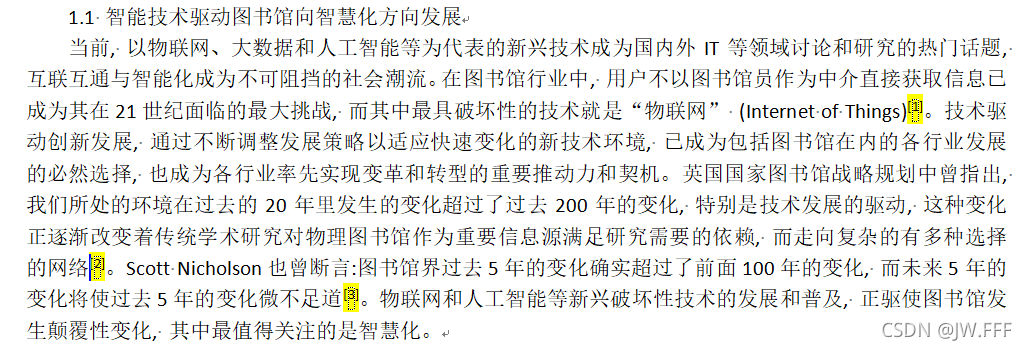- In the process of writing academic papers, the endnote function of Word can provide great convenience for collation of references, but it is often necessary to convert the endnotes to ordinary text format when submitting a formal manuscript. For many students who do not use document management software such as NoteExpress or Endnote, this often means boring and tedious manual labor.
- So is there a way to convert endnotes to ordinary text with as few manual operations as possible? Hello, yes.
- In this paper, the above requirements are broken down into two specific tasks:
- Automatic numbering of references at the end of the text
- Text Conversion of Text Endnote Markup
Please note: Before attempting the following operations, please back up the original files in advance to avoid irreparable losses.
1 Automatic numbering of references at the end of the paper
The references at the end of the text shown in the figure below are taken as an example, and the automatic numbering can be easily realized by using Excel:

(1) First, copy and paste all references in Word endnotes into a blank Excel document, select all and "clear formatting". At this point, you will get the result as shown in the figure below: each reference is arranged line by line, but the serial number has become “[1]”;

(2) Use the "Replace" tool, enter "[1]" in the "Find what", do not enter anything in the "Replace with", and click "Replace All". This step can remove the "[1]" before the references in batches;


(3) Insert a column at the far left, use the "Auto Fill Options" and use the "Fill Sequence" to enter "[1][2][3]..." to achieve the following effect:

(4) Insert a column at the far left, enter the function "=B1&C1" in the first row, and use "Copy Cell" in the "Auto Fill Option", which is the reference in the standardized format;


(5) After completing the above steps, copy and paste column A in the form of "keep text only" in the Word document, and you can get references with automatic numbering.

2 Text conversion of text endnote mark
(1) Add "[]" to the text endnote mark: place the cursor at the beginning of the document, use the "Replace" tool, enter "^e" in the "Find what", enter "[^& in the "Replace with" ]", click "Replace All". All endnote marks in the text are now enclosed in square brackets.


(2) Delete all endnote marks: place the cursor at the beginning of the document, use the "Replace" tool, enter "^e" in the "Find what", enter nothing in the "Replace with", click "Replace all" . At this time, all endnote marks in the text are deleted, and only "[]" remains in the corresponding position.


(3) Find the first "[]" in the text, put the cursor in it, press Ctrl+F9 on the keyboard, and a pair of braces will appear in [] at this time. Enter " seq n \# 0 " in the generated "{}" and press the F9 key, this sequence code will change to "1", select and cut this "1" (emphasis) .


(4) Put the cursor at the beginning of the document, use the "Replace" tool, enter "[]" in the "Find what", enter "[^c]" in the "Replace with", and click "Replace All". At this point, all "[]" in the text become "[1]".


(5) Ctrl+A to select all the text, press F9 , at this time, the "[1]" in the text will be refreshed to the corresponding serial number in order.

(6) Press Ctrl+A again to select all the text, press Ctrl+Shift+F9, and the serial numbers in the text will be converted into real ordinary text, and you're done.
Epilogue: The operations involved in this article are not complicated, mainly using the "field" function of Word, I believe you can master it with a few simple exercises.
Finally, I wish you all success in your studies and a worry-free future. (^_^)